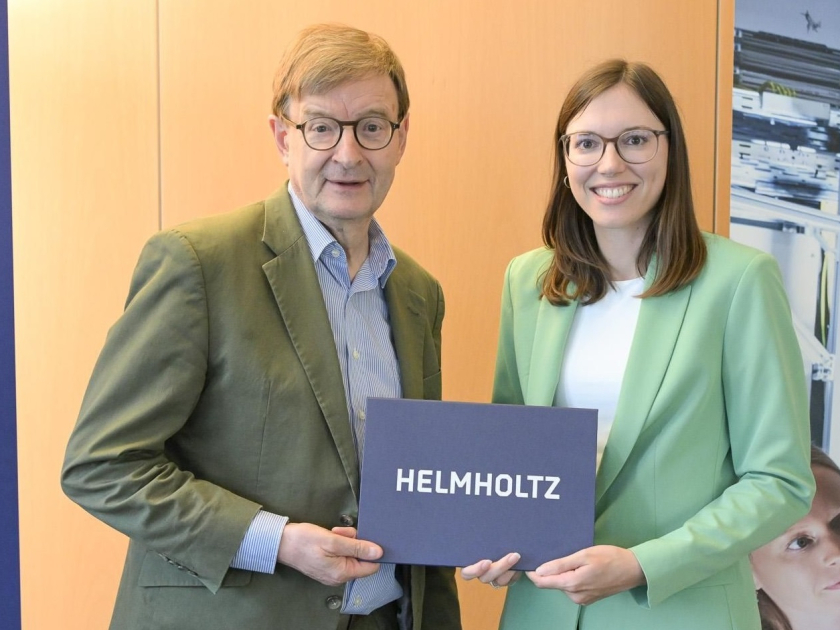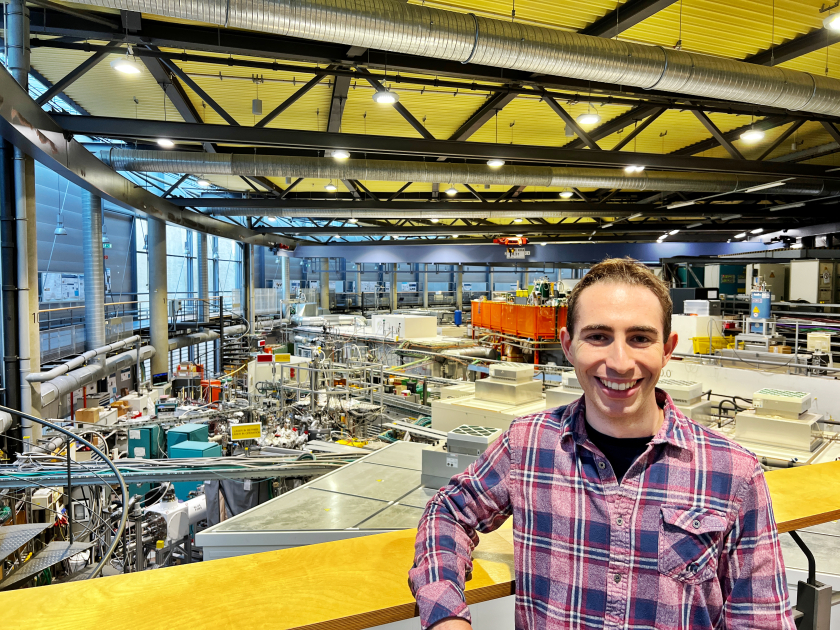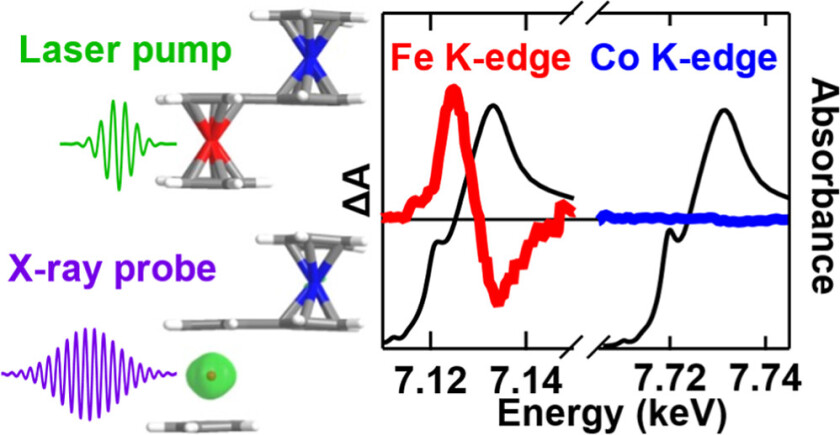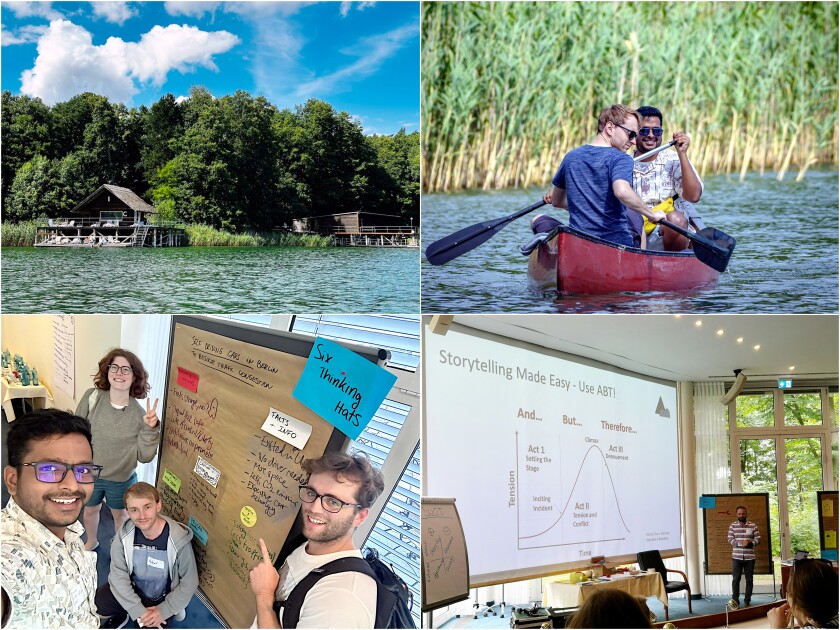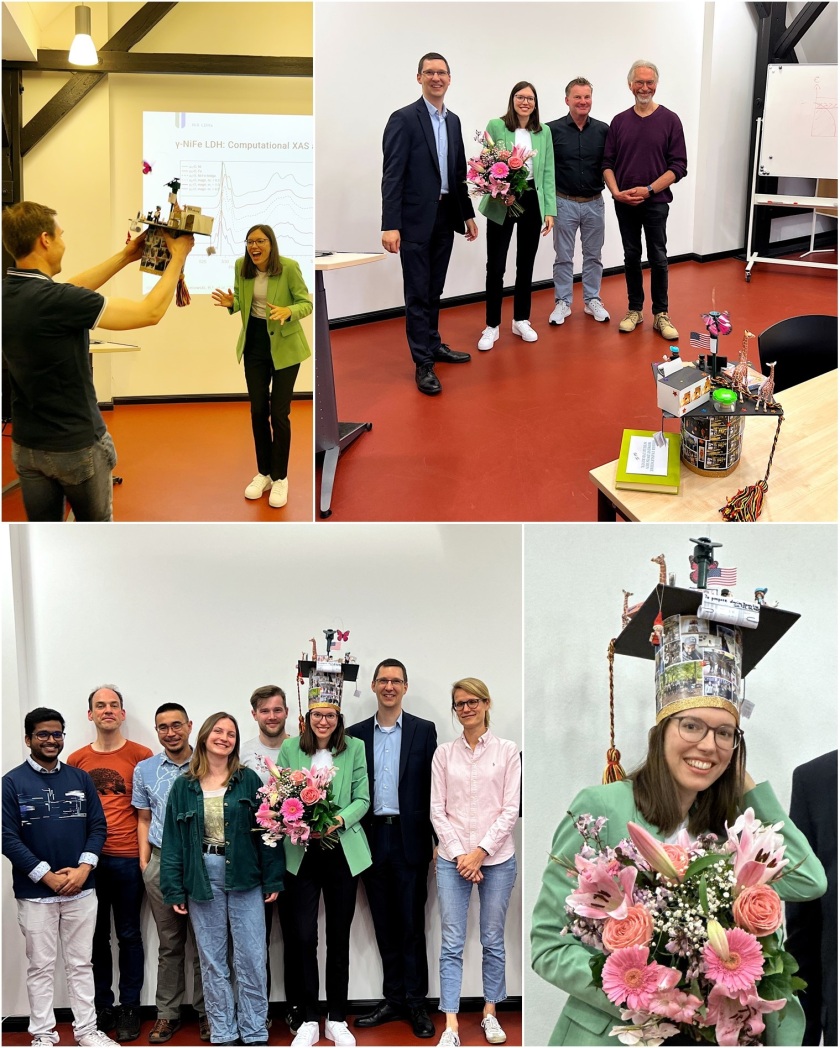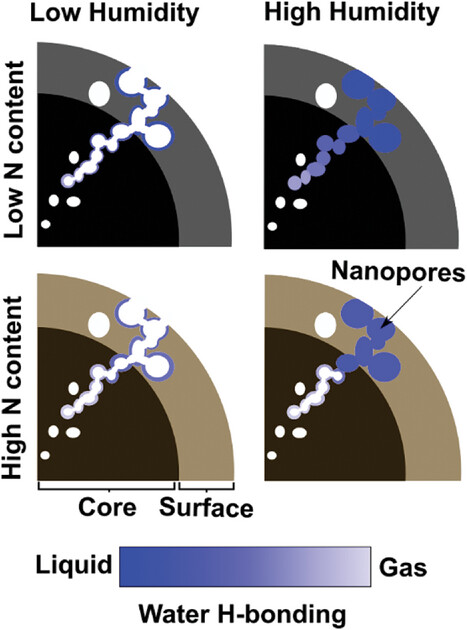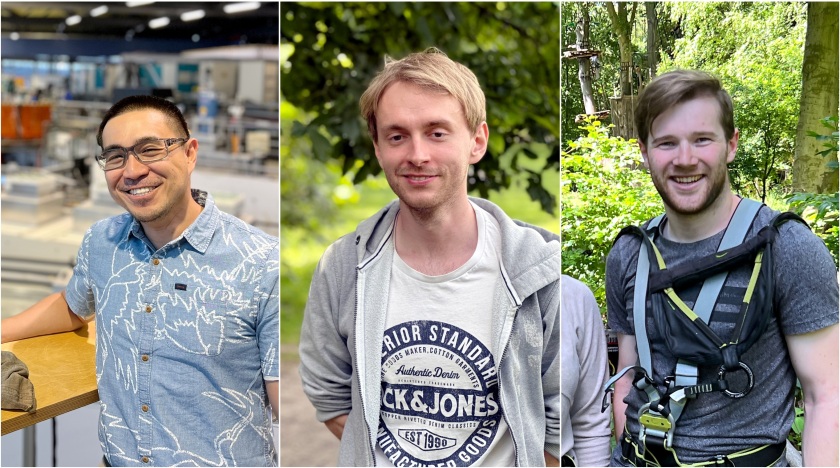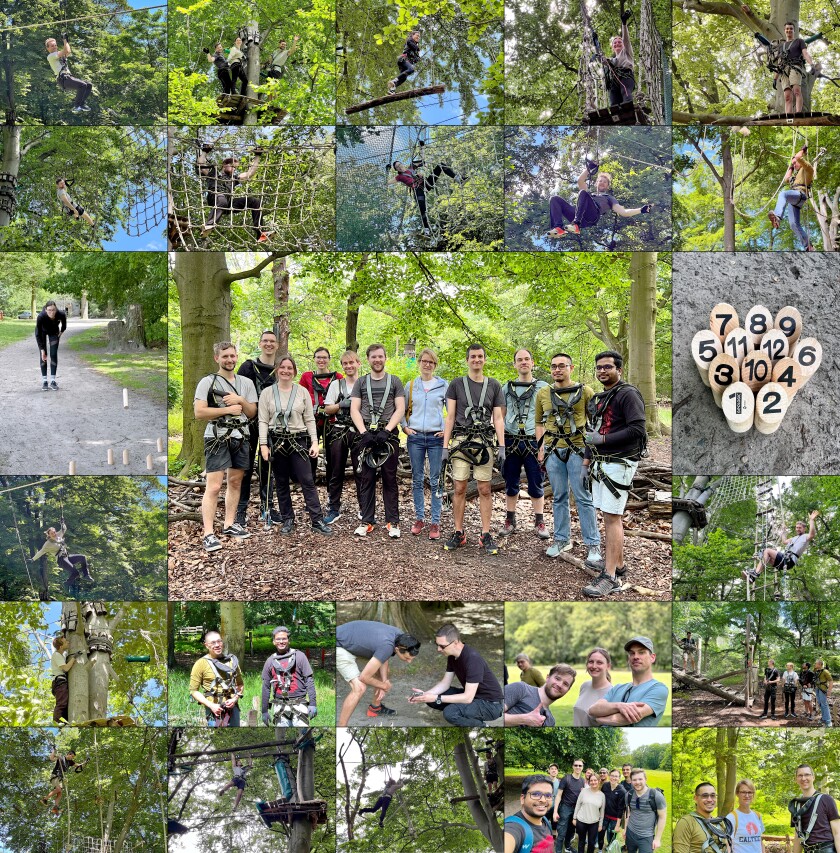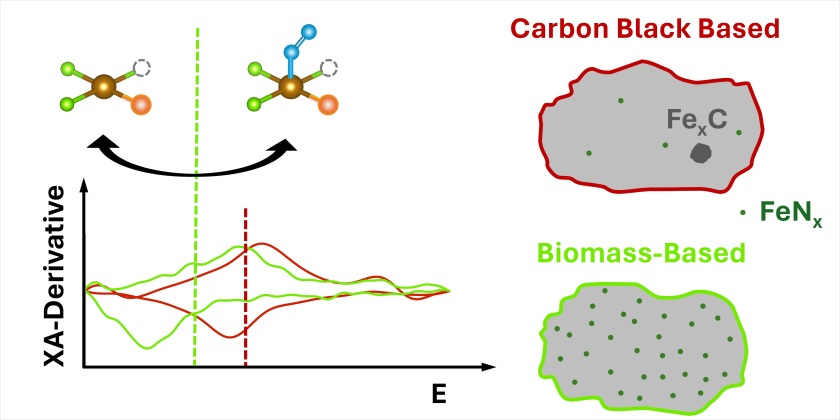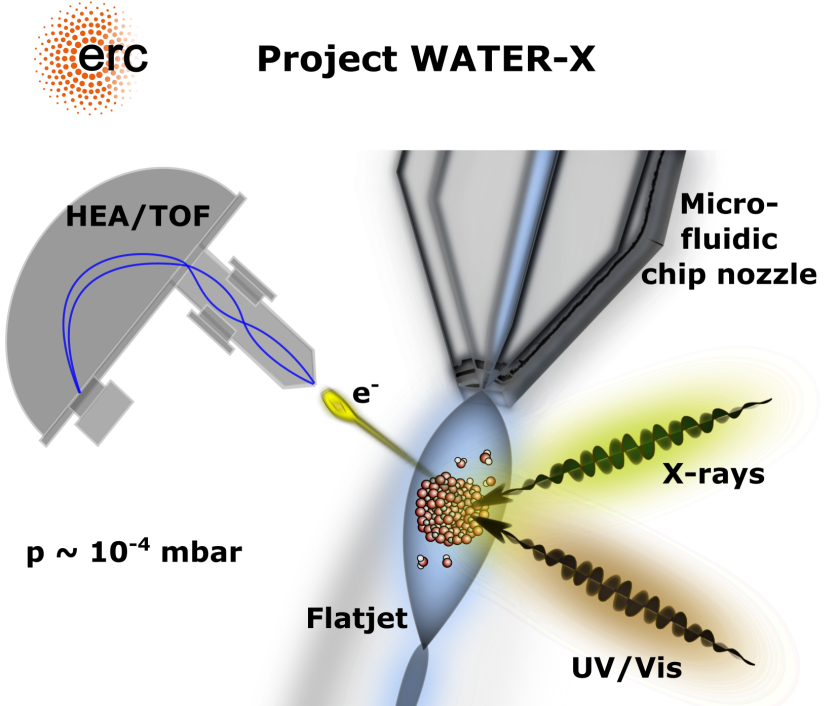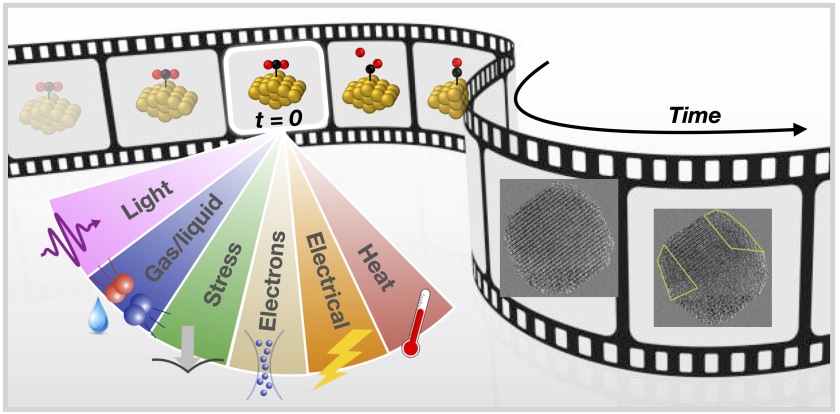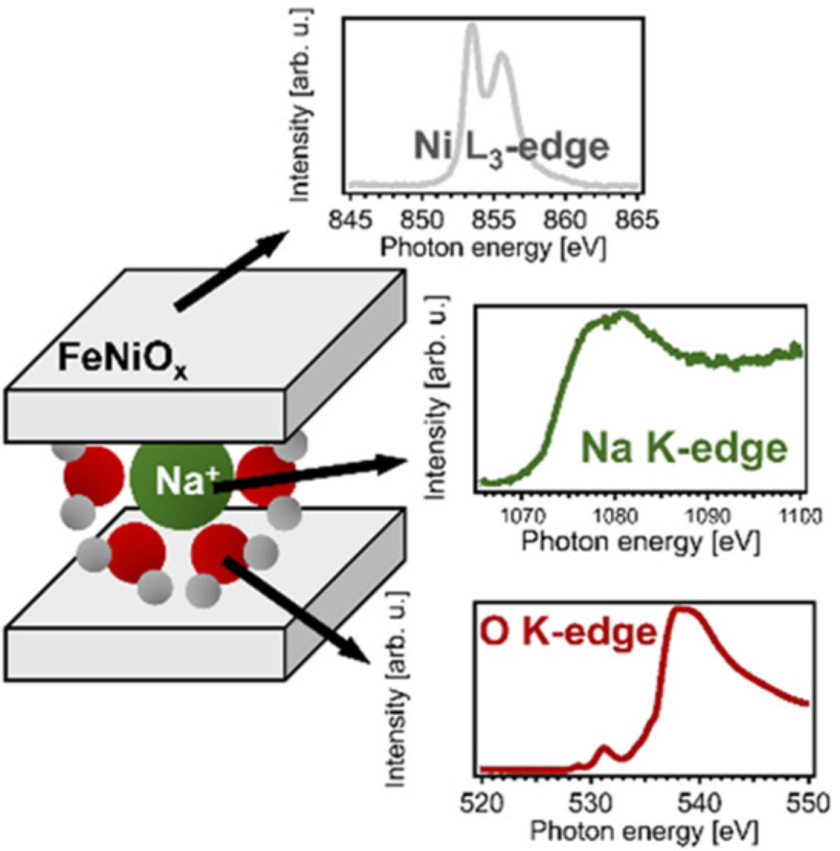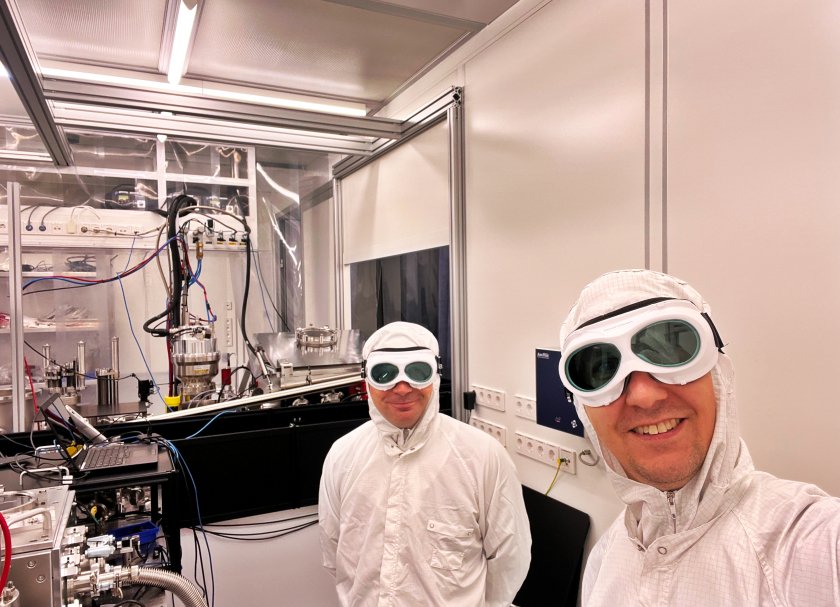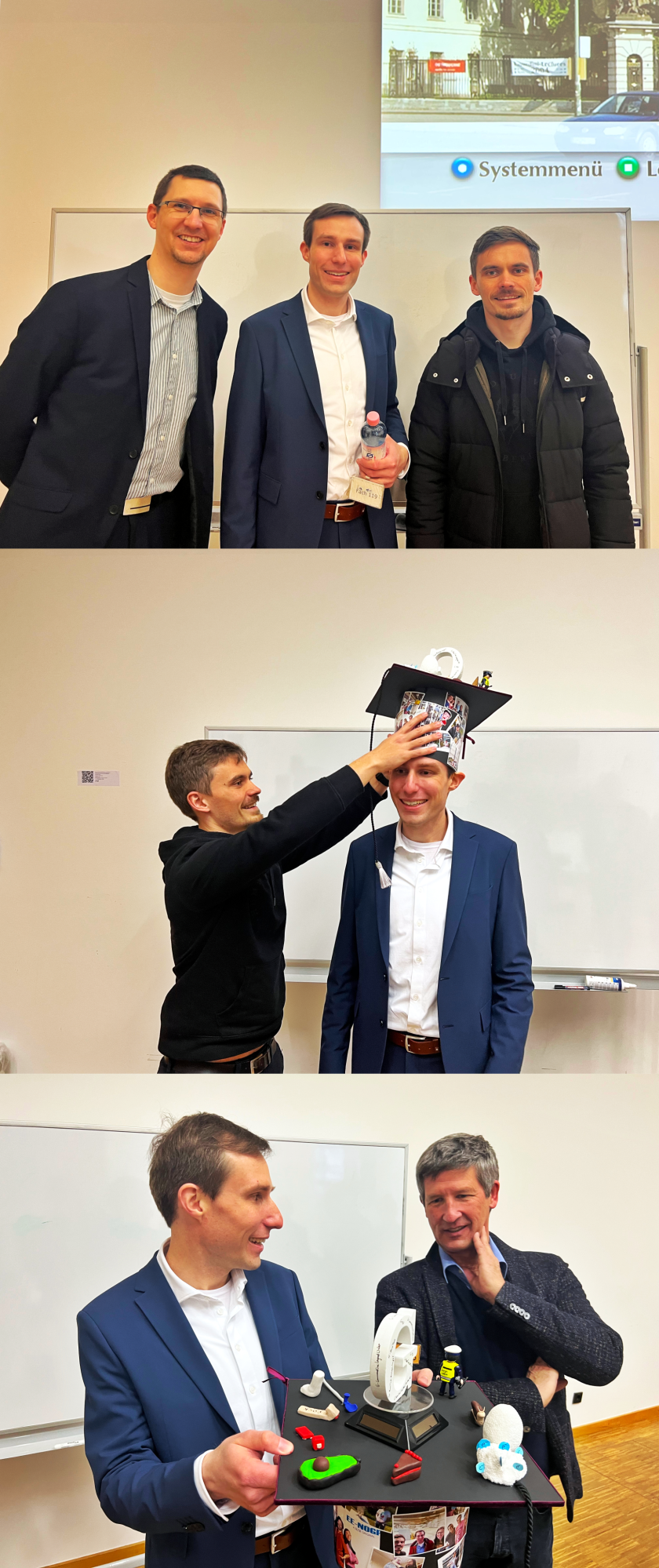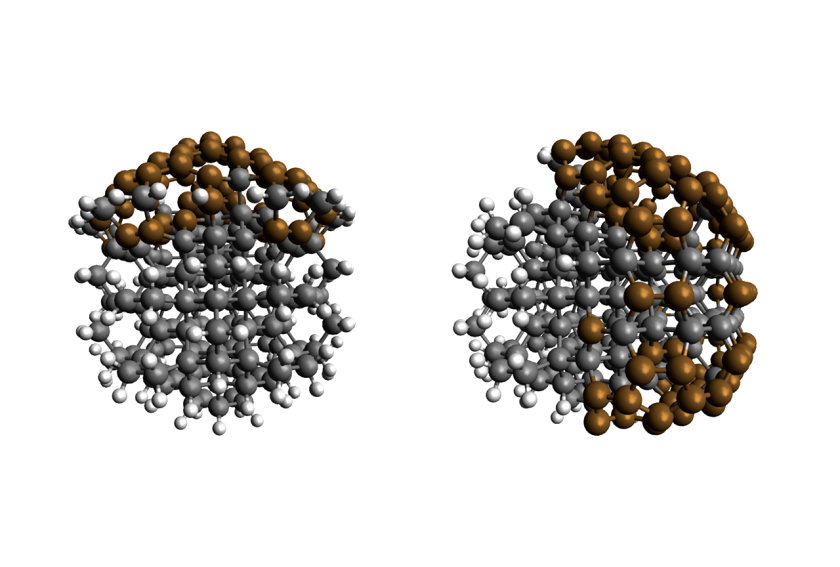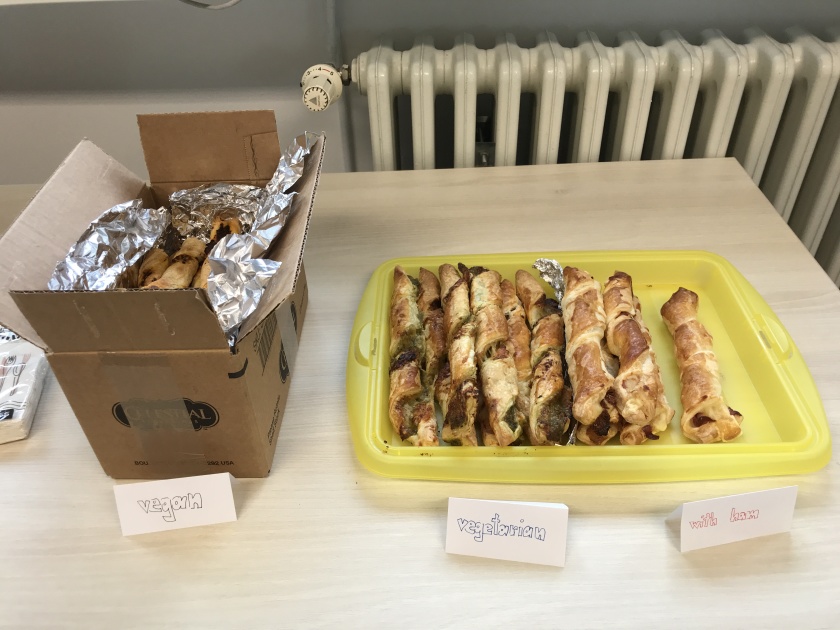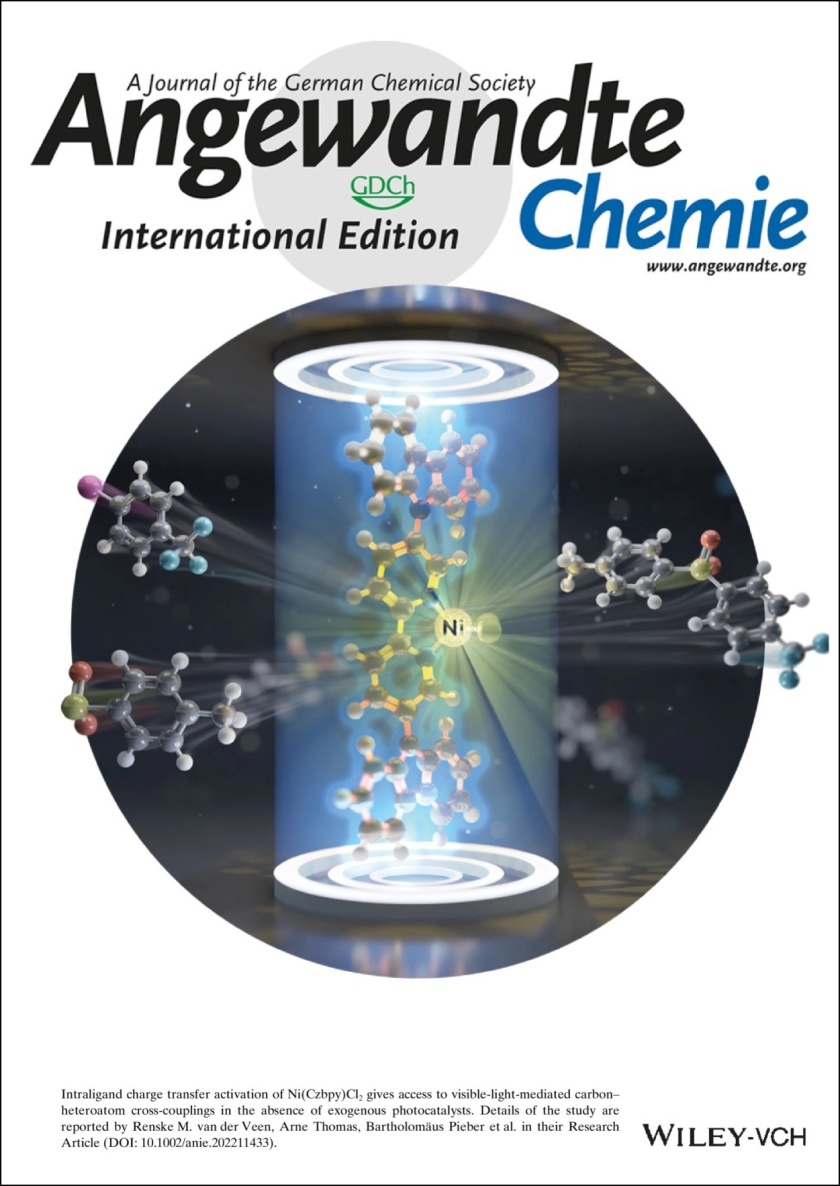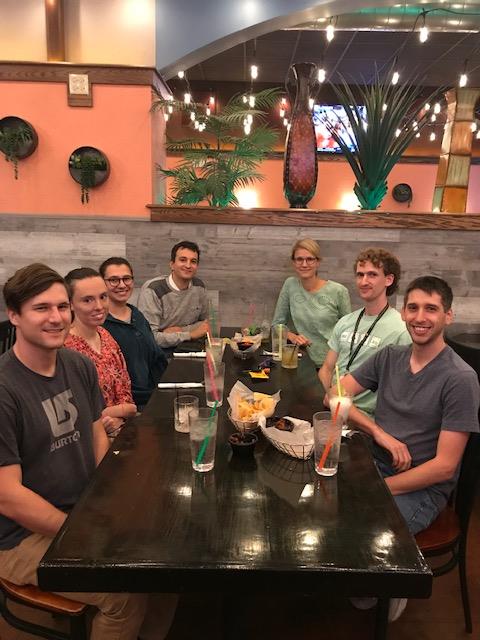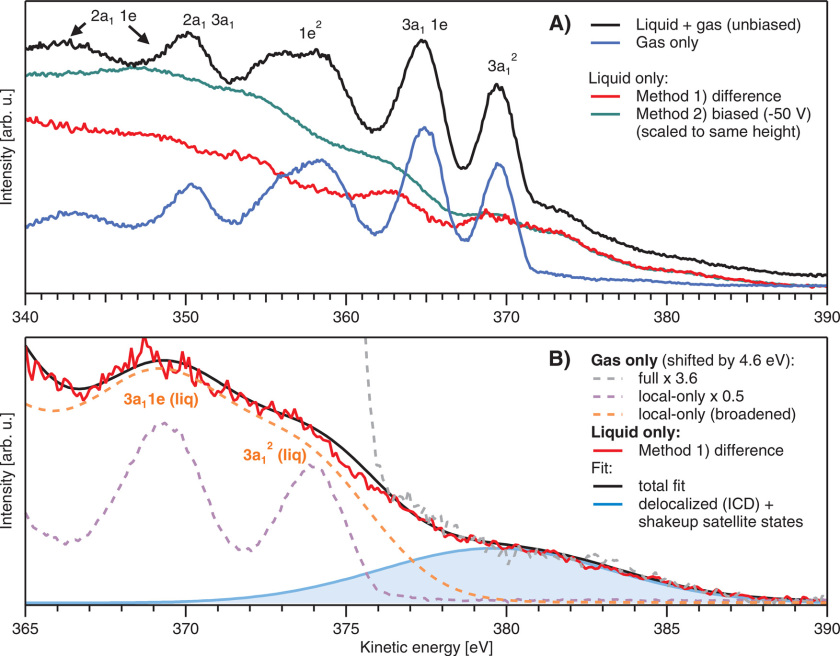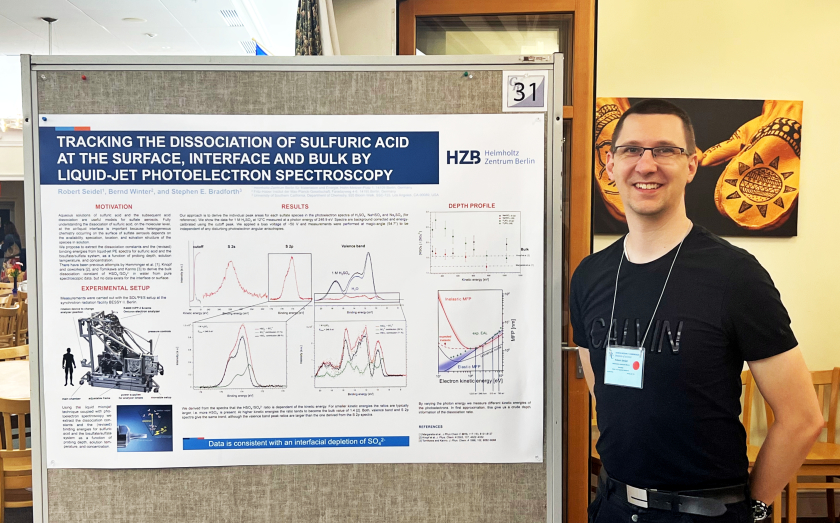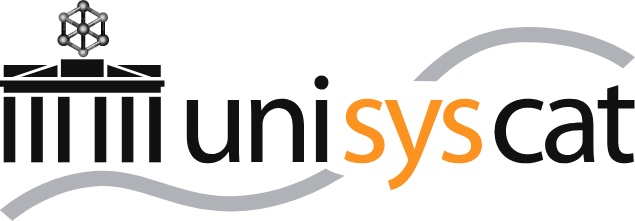Department Atomic-Scale Dynamics in Light-Energy Conversion
News
September 2025 – Successful beamtime at Bernina/SwissFEL
Our team went to the Swiss X-ray Free Electron Laser (SwissFEL) in Villigen, Switzerland, to explore the ultrafast dynamics of thermoelectric materials on femtosecond timescales. The beamtime was a big success, with stable machine performances. We are grateful to our colleagues at HZB and the beamline staff for their outstanding support, which made this achievement possible.
September 2025 – New publication on the dynamic control of core-exciton screening in Communications Materials
A collaboration between our group and partners in Germany, France, the USA, and Singapore has revealed how core excitons in zinc oxide (ZnO) are directly sensitive to photoexcited charge carriers. The experiments were carried at two synchrotron facilities: Bessy II in Berlin and the Advanced Photon Source in the USA. The results, published in Communications Materials, are the outcome of an equal contribution from our group and theory partners at Humboldt Universität. This work advances the potential of time-resolved X-ray absorption spectroscopy for probing ultrafast material dynamics at the atomic scale.
September 2025 – New paper on the control of electronic correlations with light published in Science Advances
An international collaboration between our group and partners in Switzerland, Italy, Germany and the USA has demonstrated how to tune and reduce electron correlations in nickel oxide (NiO), a model charge-transfer insulator. This breakthrough discovery of a full control over electron correlations opens new opportunities to harness the potential of this class of materials in future ultrafast optoelectronic devices. The results are published in Science Advances. Learn more in the press releases on Phys.org, the HZB and Max Planck Institute for Structural Dynamics websites, and several other blogs.
August 2025: We welcome Dr. Andreas Siebert
Dr. Andreas Siebert joined our group as a postdoc. Andreas will investigate the electronic structural properties of solid-liquid interfaces and solute-solvent interactions with resonant soft X-ray photoelectron spectroscopy using liquid microjets and flat jet systems. A very warm welcome!
July 2025 – First time-resolved diffraction anomalous fine structure measurement at the ESRF in Grenoble
Our group carried out pioneering experiments at the ESRF in Grenoble (France), where we successfully detected the world’s first time-resolved diffraction anomalous fine structure (DAFS) signal. Conceived by Moritz Meißner and Thomas Rossi at HZB, this new X-ray technique makes it possible to follow the response of photoexcited materials at the atomic scale, offering richer insights and greater efficiency than established X-ray absorption spectroscopy methods. The beamtime was a success, and we look forward to sharing the results soon!
July 2025: We welcome several new members to our group
Bachelor student Sander Hahn, bachelor student Petar Lolovic, and PhD student Fanny Getzlaff have joined our group. Sander will work on runtime optimizations of fitting algorithms used for data from time-resolved spectroscopy. Petar will investigate novel molecules for metal-free photocatalytic hydrogen production by transient absorption spectroscopy and Fanny will spectroscopically investigate aqueous metal oxide nanoparticles in solution to understand the electronic structure at this buried solid-liquid interface. A very warm welcome!
July 2025 - Hanna got rewarded with the Helmholtz Promotion award for her outstanding scientific PhD in the Helmholtz topic ‘matter’
Congratulations, Hanna! She received the prestigious award directly from Helmholtz President Prof. Dr. Wiestler on July 7 for her groundbreaking X-ray spectroscopic work on nickel-iron-based electrocatalysts for water splitting under alkaline conditions. This highly efficient catalyst for producing green hydrogen is one of the most promising alternatives to expensive and rare materials such as iridium. Thanks to Hanna's research, the secrets of how this catalyst works are now much better understood. Only 11 out of 9000 PhD students were selected for the award. It is well deserved. For more information, please click here and here.
June 2025 - Renske in a live prime-time television interview
RBB24, part of the nationwide broadcasting network, reported on June 20 from and about the WISTA technology park in Adlershof, which also includes the HZB. Reporter Ulrike Finck interviewed several researchers on campus – live at prime time at 7 p.m. Renske was one of the interview guests and presented our research and one of the experimental stations in the BESSY II hall to the viewers on screen. If you missed it on live TV, don't worry: Click here for the video of “Der Tag in Berlin & Brandenburg”. Unfortunately only in German. The BESSY II story begins at time stamp 9:36.
December 2024 - Successful beamtime at UE52-SGM beamline
Our last beamtime in 2024 was very successful. Thomas, Peter and the PhD students Federico, Hubert, and Aswin were happy, but also exhausted from the long shifts and were looking forward to the well-deserved Christmas break. We have obtained excellent time-resolved data on chromium isothiocyanate Cr(NCS)6 in water, which will help us to understand its intersystem crossing and the excited state dynamics between ligand and metal ion in this transition metal complex relevant for photocatalysis. The full analysis of this early Christmas data gift will take several months. Merry Christmas and a Happy New Year!
October 2024 – Federico Milani joins our group!
We welcome PhD student Federico Milani to our group. He will work on laser-pump X-ray probe transmission spectroscopy on transition metal complexes in liquid media.
August 2024 – Visiting the BESSY II storage ring tunnel
The planned three-week annual shutdown of BESSY II gave us the opportunity to visit the synchrotron booster and the storage ring tunnel. For some of us, it was the first time we saw these most sacred places. We had the rare opportunity to see our new UE51 undulator waiting to be moved to its final position in the storage ring. This colossal structure will soon produce brilliant soft X-ray synchrotron light with tunable polarization, and once the commissioning phase is complete, we will use all its features.
July 2024 – Our paper about the high-spin state electronic structure of a Ferrocene electron donor molecule has been published in JACS
Together with our colleagues from the University of Illinois at Urbana-Champaign and from the Northwestern University in Evanston, Illinois, we provide evidence of a 5(d–d) formation in an important donor-acceptor molecule relevant in photocatalysis, ferrocenyl cobaltocenium hexafluorophosphate, in short [FcCc]PF6. Using femtosecond optical transient absorption spectroscopy we identified two distinct electronic excited states with 30 and 500 ps lifetimes. Using a combination of ultraviolet, visible, near-infrared, and short-wave infrared probe pulses, as well as time-dependent density functional theory calculations allowed us to assign the 30 ps state as the 3(d–d) state and the 500 ps state as the high-spin 5(d–d) state. The high-spin character of the 500 ps state was further confirmed by X-ray transient absorption spectroscopy at the Fe and Co K edges. Our results demonstrate that the high-spin state of ferrocene should be considered when designing donor–acceptor assemblies for photocatalysis and photovoltaics. For more information, please click here.
July 2024 – Annual HZB PhD retreat
Aswin and Hubert attended this year’s annual HZB Doctoral Researchers Retreat, which took place in a hotel on the beautiful lakeshore in Shorfheide, approximately 40 kilometers north of Berlin. The three-day event was a perfect opportunity to network with the other 60 participating PhD students during the various soft skill courses (such as negotiation or promoting and stimulating creativity in science and academia) as well as during the many outdoor activities on and in the nearby lake. Bernd Rech, Scientific Director of the HZB, was present the first evening and answered the doctoral student’s most pressing HZB and career-related questions. Nice weather and delicious food rounded off this year’s very successful PhD retreat. See you next year!
June 2024 – Hanna successfully defended her PhD with distinction! Congratulations!
All the hard work paid off! Well done, Hanna. After answering confidently and with ease more than 50 tough questions from the doctoral committee, consisting of the reviewers Holger Dau (FU Berlin) and Peter Strasser (TU Berlin) as well as the committee chair Maria-Andrea Mroginski, Hanna successfully defended her PhD in Chemistry with the highest grade of ‘summa cum laude’. Next, Hanna will explore new career opportunities in the Bay Area on the west coast of the USA. We are very grateful for the last four wonderful years we have spent together and wish you all the best in your future endeavors.
June 2024 – Our paper about water confinement in nitrogen-rich nanoporous carbon materials has been published in the journal of Advanced Functional Materials.
In a joint collaboration with colleagues from the Max Planck Institute for Chemistry in Mainz, the Friedrich Schiller University Jena and HZB, we investigated the interaction between water molecules and surfaces in porous carbon-based materials. By using in situ scanning transmission X-ray microscopy, resonant inelastic X-ray scattering and near-ambient pressure resonant photoelectron spectroscopy, we found that the water adsorption on nitrogen-containing nanoporous carbon surfaces is controlled by a subtle balance between water–water and water–surface hydrogen bonding interactions, which together determine the water structures formed and their stability. Please click here for more information.
June 2024 – New group members
We welcome three new members to our group. Postdoc Dr. Rico Mayro Tanyag will support the upgrade of our SOL³PES setup and, after completion, will study transition metal-oxide nanoparticle-water interfaces using resonant photoelectron spectroscopy. PhD student Hubert Czternastek will investigate plasmonic catalysts in-situ using pump-probe spectroscopy and Master student Moritz Meißner will develop pump-probe diffuse anomalous fine-structure instruments at BESSY II, to investigate the photoinduced magnetic phase transition in iron-rhodium.
May 2024 – Group outing to the forest climbing park Jungfernheide
This year our annual group outing took us to one of Berlin’s largest high ropes courses located in Charlottenburg. For many of us it was the first time that we climbed, hung, slid and crawled between trees several meters high. There were different routes with different levels of difficulty (marked by a color code from green-easy to blue, red, to black-very difficult). Nick, Luise, and Moritz successfully mastered the black route, while the rest of us had fun on the easier courses. After three hours we were all totally exhausted and will certainly have sore muscles for the next few days. Afterwards we regained some strength in a nearby beer garden and played a round of Mölkky – many thanks to Thomas for introducing us to this very fascinating game.
April 2024 – Our paper on operando X-ray absorption spectroscopy of Fe-N-C catalysts has been published in the journal Sustainable Energy & Fuels
Congratulations Garlef and Hanna! Together with colleagues from the Institute of Engineering Thermodynamics of the German Aerospace Center and from the Carl von Ossietzky University in Oldenburg we investigated several iron-nitrogen carbon catalysts and characterized the atomic iron-based active sites under operando conditions by X-ray absorption spectroscopy at the iron K-edge. We found the reversible iron redox potential is lower compared to that of conventional catalysts, which is possibly due to hetero-atom doping and iron under-coordination. Please click here for more information.
March 2024 – ERC Consolidator Grant for Robert
Congratulations! For his project WATER-X, Robert was awarded an ERC Consolidator Grant of 2 million euros. Over the next five years, he will intensify his research on promising transition metal oxide nanoparticles relevant to photocatalytic water splitting reactions. Using static and time-resolved soft X-ray resonant photoelectron spectroscopy, Robert aims to measure the short-lived molecular intermediates and their associated electronic structure, their lifetimes, energetics, photoelectron angular distributions, and their decay mechanisms. To this end, he will hire two postdocs and three PhD students who will work at the BESSY II synchrotron in Adlershof and in Iain Wilkinson’s newly commissioned laser laboratory on the Wannsee campus. For more information see here.
March 2023 – PS-ADLU visits PVcomB
We had the opportunity to get a tour through the photovoltaic competence center in Berlin, in short PVcomB, which is also part of HZB. It is home of the research and production of the most efficient record-breaking photovoltaic modules based on silicon thin-film technique. Deputy head of PVcomB, Dr. Björn Rau, showed us the impressive deposition machines, characterization labs, and the thin-film silicon baseline. Together with our newest member, pupil Benjamin Schweinitz from Berlin, who joined us for a two-week internship to learn the daily life of a researcher at HZB, we were very impressed by the research conducted at PVcomB. For more information about PVcomB click here.
March 2023 – Garlef’s first first-author paper has been published in the Journal of Materials Chemistry A as a HOT paper!
Well done, Garlef! Together with our colleagues from FHI, Arno Bergmann and Beatriz Roldán Cuenya, and Robert Wendt from HZB, we have explored the electronic-structure of Fe–Ni thin-film catalysts during the oxygen evolution reaction (OER) using resonant photoelectron spectroscopy. Iron-nickel (oxy)hydroxides are one of the best OER catalysts for water splitting in alkaline media. We were particularly interested in the change in the absorption spectra of nickel and oxygen when different electrode potentials were applied to the catalyst. Additional resonant valence band spectra helped to distinguish between Ni3+ and Ni4+ species, which indicate charge accumulation in adjacent hole states. We also identified the contributions to the oxygen partial density of states that are crucial for OER catalysis. Our results reveal the occurrence of metal-oxygen hybridized holes, which potentially promote the active sites as indirect electron acceptors. The nature of this metal-oxygen charge redistribution is crucial for the formation of OER intermediates. Please click here for more information.
February 2023 – Renske is appointed as S-W2-Professor at TU Berlin!
Congratulations! Renske is now officially affiliated with the Institute of Optics and Atomic Physics at the Technical University Berlin. Check out the news!
Paper published in Nature Reviews Chemistry
Started during the pandemic, we finally finished our review paper on time-resolved transmission electron microscopy. What a tour de force! Check it out here in Nature Reviews Chemistry!
January 2023 - Hanna’s first first-author paper!
Congratulations Hanna! Our paper about the reversible and irreversible cation intercalation in NiFeOx oxygen evolution catalysts in alkaline media was published in The Journal of Physical Chemistry Letters. Together with our colleagues from the Leiden Institute of Chemistry at the Leiden university, The Netherlands, and from HZB, we studied the intercalation process by measuring the soft X-ray absorption spectra at the nickel L-edge as well as at the sodium and oxygen K-edges of this layered Ni0.8Fe0.2Ox electrocatalyst during the oxygen evolution reaction using NaOH as electrolyte. The spectra reveal a (reversible) increase in the sodium intensity at the intercalation potential, which also coincides with an increase in the nickel oxidation state. However, the reversible increase in intercalated Na+ ions did not lead to an increase in the water content of the catalyst layer, which suggests that the intercalation of Na+ has little effect on the catalyst morphology. Our work also supports previous electrochemical studies that Na ions from the electrolyte are being intercalated into the γ-phase of Ni-based electrocatalysts for water oxidation. For more information about this fascinating story, please click here.
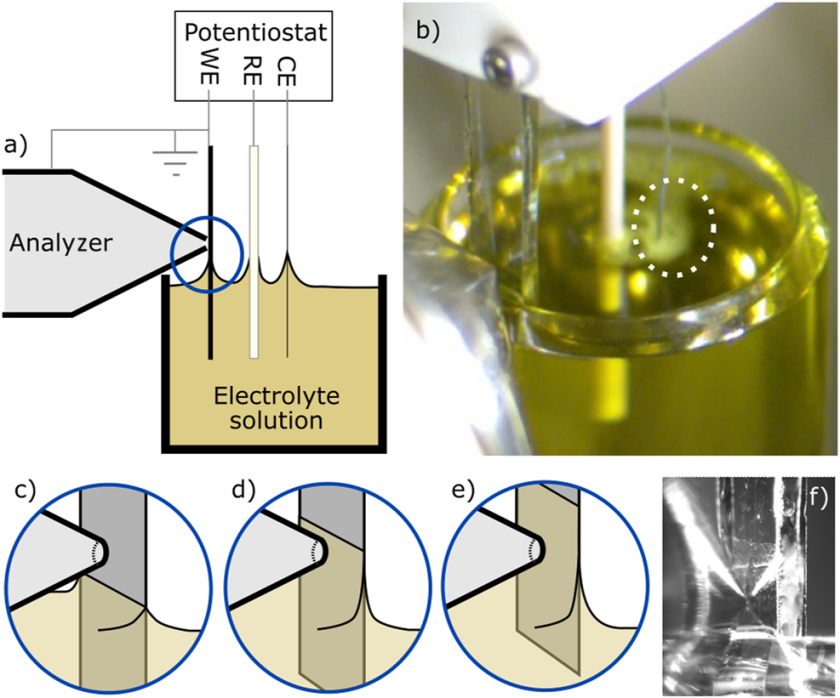
A) Sketch and b) photograph of the dip-and-pull setup with the yellow iron hexacyanide solution in a beaker sitting in the vacuum chamber under ambient pressure conditions. The three electrodes are first c) dipped into the electrolyte solution and then d) pulled up, with measurements taken while slowly moving between positions d) and e). The liquid meniscus is clearly shown in the photograph of f). The dashed circle in b) highlights some small hydrogen bubbles at the counter electrode. © J. Chem. Phys. 157, 244701 (2022)
December 2022 - Our spectroelectrochemistry paper about operando measurements on iron hexacyanide using the dip-and-pull technique has been published in the Journal of Chemical Physics
What a nice Christmas present! Our ‘multi-synchrotron’ work between MAXIV, Lund, and BESSY II, Berlin, on X-ray photoelectron spectroscopy of the redox reaction of iron hexacyanide has been published in JCP as part of the Special Topic on ‘In situ and Operando characterization’. While our colleagues around Robert Temperton from the HiPPIE beamline at MAXIV performed ambient-pressure XPS measurements using the so-called dip-and-pull technique to study the conversion of [FeIII(CN)6]3− in water into [FeII(CN)6]4− and following the (reversible) iron 2p signal, Robert and Wilson at HZB measured the reference iron 2p spectra with the liquid-jet technique for both redox states with the SOL³PES setup at BESSY II. The dip-and-pull technique is a fairly new technique in which a thin liquid film is prepared by pulling an electrode out of a degassed solution beaker in a ‘vacuum’ chamber equilibrated by the vapor pressure of the electrolyte solution (in case of water, ~10 mbar at 10°C). Our study demonstrates that the liquid film on the electrode is electrochemically active such that the relative potential difference between the working electrode and the solution can be controlled to a large extent. For more information about this technically demanding experiment, please click here.
November 2022 – Visiting LIDUX Laser Lab
Robert has visited Iain Wilkinson in his new state-of-the-art ‘Liquid and Interfacial Dynamics with Ultrafast X-rays facility’, LIDUX, at the Wannsee campus of HZB. Liquid jet and flatjet experiments with this impressive, powerful 500 W laser system will be available by the end of 2023. It will then be possible to observe ultra-short femtosecond processes after UV/Vis excitation by probing them with few-femtosecond soft X-ray pulses, capable of kicking out electrons from deeper lying core-orbitals that offer much cleaner spectral fingerprints compared to electrons ejected from the valence band. This laser offers the excellent time resolution of an X-ray free-electron laser, but does not generate any unwanted space charges in the samples due to lower pulse intensity and a much higher repetition rate of 53 kHz. Check out more here.
Garlef Wartner is now Dr. Garlef Wartner!
Congratulations Garlef! With many, many spectroscopy-related questions from the PhD committee, consisting of the reviewers Simone Raoux (HZB/Humboldt University), Olle Björneholm (Uppsala University), and Robert, as well as the Humboldt University professors Oliver Benson, Emil List-Kratochvil, and Jan Lüning, Garlef delivered a brilliant performance in his defense. Overall, his PhD was graded with magna cum laude. Garlef will continue his work on electrochemical water splitting-cells in the group of Marc Tesch from the Max Planck Institute for Chemical Energy Conversion in Mülheim an der Ruhr, but will stay in Adlershof and work in collaboration with the Fritz Haber Institute Berlin and HZB. So, it is not time to say goodbye yet.
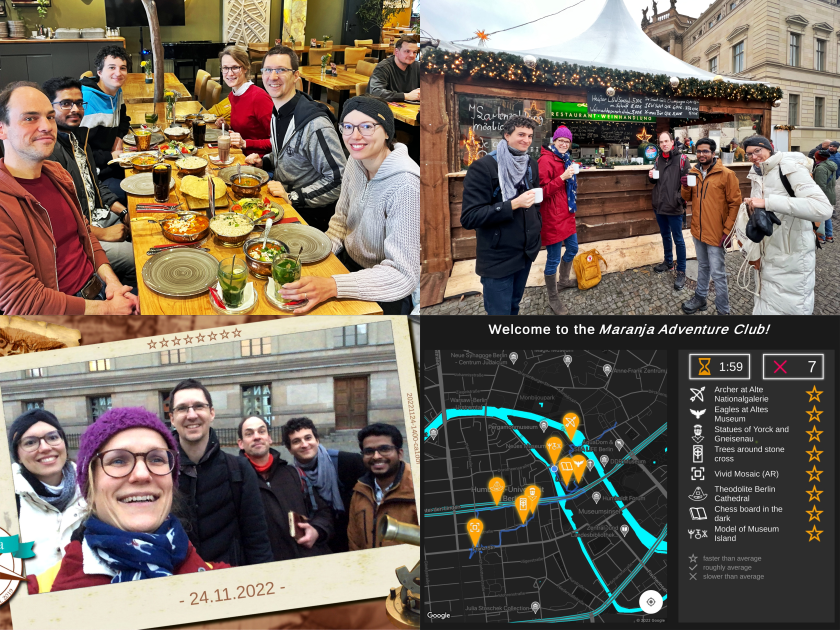
PS-ADLU is on the hunt! First, we strengthen ourselves at an Indian restaurant (upper left). There was some time for mulled wine between the individual quests (upper right). Everyone was happy after the successful hunt (lower left). The various stations to which our scavenger hunt led us (lower right).
November 2022 - We spent our annual excursion on a scavenger hunt through downtown Berlin
After a rich Indian meal in the Amrit restaurant on Oranienburger Straße, we started a scavenger hunt through Berlin, where we had to solve many puzzles and quests. Because we solved them so efficiently, we had plenty of time between the quests for some mulled wine at the Christmas market on Bebelplatz. It was a wonderful afternoon!
November 2022 Beamtime at MAXIV
Robert joined Kevin Lovelock and his team from Reading University for a four-day beamtime at MAXIV in Lund, Sweden. We studied the resonant Auger spectra of zinc salts in different solvents and were particularly interested in the participator Auger fingerprints of the anions and looked for trends in the (valence) binding energies upon changing the solvent. This work began in an earlier beamtime by Kevin Lovelock at BESSY II with the SOL³PES and is now being continued at the HiPPIE endstation at MAXIV, which is managed by Robert Temperton. After careful data analysis by the PhD students Lewis and Francis, the data from both synchrotron beamtimes will (hopefully) find their way into a publication.
Christoph's paper on solvated electrons from nanodiamonds is published in Nanoscale!
Congrats, Christoph! Together with collaborators from Paris-Saclay, France, Uppsala University, Sweden, University of Stuttgart, Free University Berlin and Julius-Maximilians-University Würzburg as well as with colleagues from HZB, Franziska Buchner, Thorren Kirschbaum, Annika Bande and Tristan Petit, they were able to show for the first time spectroscopically the emission of solvated electrons from nanodiamonds with hydrogen and fullerene-like carbon on the surface upon excitation with visible blue light. Without these species at the surface, deep UV-light is needed and no electron emission upon visible light excitation was detected. This result is a big step forward and will put nanodiamonds with hydrogen/fullerene surface ‘treatment’ in the spotlight as potential candidates for photocatalysts used for CO2-reduction or nitrogen-to-ammonia conversion. Check out the paper here as well as the HZB press release here.
Hanna spoils us during group meeting!
What a treat! Hanna made vegan, vegetarian, and carnivore bread sticks. Yum!
Article published in Angewandte Chemie!
Our article on Ni-based photoredox catalysis was published in Angew. Chem. ! This work resulted from a collaboration with the groups of Arne Thomas, Bart Pieber, Henrike Müller-Werkmeister, and Josh Vura-Weis. Check it out.
September 2022 - Beamtime at the APS
Renske and Thomas joined Rachel’s and Jack’s beamtime at the Advanced Photon Source at Argonne National Laboratory just south of Chicago. It was an exhausting but successful six-days/24-hours transient-hard-X-ray-absorption-measurement marathon of bimetallic molecular complexes relevant for photocatalysis.
August 2022 - Our article about intermolecular Coulombic decay in liquid ammonia has been published in Structural Dynamics.
Our colleagues from FHI (Winter group) and from Prague (Slavíček group and Hanns Christian Schewe from Jungwirth group) together with Robert measured Auger spectra of liquid ammonia for the first time. The intermolecular Coulombic decay (ICD) fingerprints are hidden under a shoulder on the high-energy side of the normal nitrogen Auger peak overlaid by shake-up satellites. In ICD, an initially core or inner-valence ionized atom or molecule electronically decays, and the released energy ionizes a neighboring entity via Coulombic electron interactions. Thanks to the theorists from Prague, we were able to deconvolute the messy Auger-peak structure, and our calculations support that ICD does indeed contribute. Liquid ammonia is a hydrogen-bonded system, and the electronic processes can couple to nuclear dynamics following core-level ionization. Unlike in liquid water, we found no significant proton-transfer dynamics occurring between the hydrogen-bonded units within the respective N 1s core-hole lifetime. You can read more about this fascinating basic-research study here.
August 2022 - Welcome Aswin!
Phd candidate Aswin Jyothilakshmi Ravi (in short JR) from Kozhikode, India, joined PS-ADLU. A very warm welcome!
July 2022 - Gordon Research Conference in Holderness
After a three-year hiatus due to the Corona pandemic, Robert attended the Gordon Research Conference of Water and Aqueous Solutions in Holderness, New Hampshire, USA. He presented recent liquid microjet data from sulfuric acid in water. From the valence and core-level spectra we can derive the dissociation constant as a function of probing depth, temperature and concentration. These dissociation constants are important input parameters for various climate (change) models, since aqueous aerosols of sulfate and bisulfate ions play a crucial role in cloud formation.
July 2022 - Our department becomes part of the UniSysCat cluster
UniSysCat stands for Unifying Systems in Catalysis, which is a Cluster of Excellence. More than 260 researchers from four universities and four research institutes in the Berlin and Potsdam area work together on current challenges in the highly relevant field of catalysis.
We are looking forward to many fruitful collaborations!
July 2022 - Thomas attends the Ultrafast Phenomena conference
Together with Jack and Rachel from UIUC he enjoyed many good talks & French croissants...
June 2022 - HZB retreat in Schmöckwitz
Our annual 2-day retreat for all group leaders at the HZB took place in beautiful Schmöckwitz, located at the very east of Berlin on the border to Brandenburg. A tightly packed schedule with talks, presentations and group discussions on the strategies and future plans of BESSY II and III awaited Renske and Robert.
June 2022 - Martin Gruebele from the University of Illinois at Urbana-Champaign visited us.
Martin is a former colleague of Renske in the Department of Chemistry at the University of Illinois at Urbana-Champaign. Renske and Robert gave Martin a detailed tour through the BESSY synchrotron tunnel and the storage ring. Thanks to the ongoing shutdown we could show him all sacred places at BESSY II.
March/April 2022 - Jack, Rachel & Conner visit BESSY II
PhD students Jack, Rachel, and Conner from UIUC flew all the way from Illinois to Berlin for three weeks of beam time at the UE52_SGM beam line at BESSY.
May 2022 - PS-ADLU grows!
Robert Seidel and his group joined Renske van der Veen’s Department of Atomic-Scale Dynamics in Light-Energy Conversion (PS-ADLU). A warm welcome everyone!







